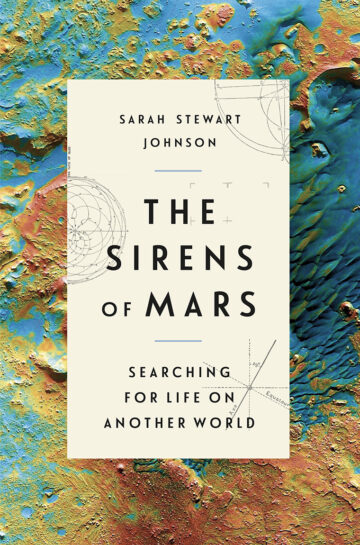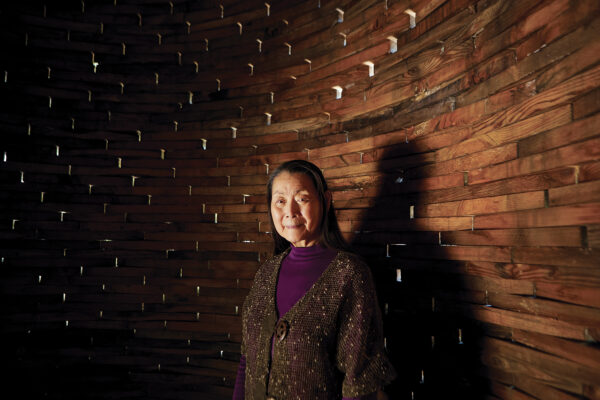In her 2020 book The Sirens of Mars: Searching for Life on Another World, Sarah Stewart Johnson, AB ’01, recounts when, as a WashU sophomore, she was on a class trip to Hawaii led by Raymond Arvidson, professor of Earth and planetary sciences. While climbing the dormant volcano Mauna Kea, she traversed well above where trees and plants could grow, reaching an ashy, smoldering landscape above the clouds. There she made an unexpected discovery — a tiny fern growing beneath a rock — revealing to her the persistence of life itself.

The Sirens of Mars
Searching for life on another world
“There was something in that moment that made me become a planetary scientist,” writes Johnson, who saw then “a chance to discover the smallest breath in the deepest night and, in so doing, vanquish the void that lurked between human existence and all else in the cosmos.” Johnson has continued that search for life ever since.
The Sirens of Mars, one of the New York Times’ 100 Notable Books of 2020, blends the history of Mars exploration with Johnson’s own scientific journey — from her childhood in Kentucky, where she was inspired by her father’s passion for astronomy, to her current position as an associate professor of planetary sciences at Georgetown University. Along the way, Johnson attended Oxford University as a Rhodes Scholar, earned her PhD from MIT and served as a White House Fellow under the Obama administration. But the foundation for Johnson’s career fell into place at WashU.
Knowing that Arvidson, now the James S. McDonnell Distinguished University Professor, had been an integral part of the first Mars rover mission, Pathfinder, Johnson immediately sought him out on arriving at WashU and joined his lab. Arvidson went on to become an invaluable mentor, and years later, Johnson worked with him again on the Spirit and Opportunity rover missions at NASA’s Jet Propulsion Lab in Pasadena, California. Johnson also cites the influence of the late David Hadas, a professor of English and religious studies who kindled her interest in writing and in exploring life’s big questions, all of which carried over into The Sirens of Mars.
“I wanted to offer a different approach than when you solely look at the science,” says Johnson of her book. “There is this human history there. The more you study it, the more beauty and profundity there is.”
At Georgetown, Johnson’s work focuses on how to detect and decode biosignatures — traces of life — on other planetary bodies. “To figure out the best ways we can do that,” says Johnson, “my students and I travel to extreme environments all over the world to investigate what kinds of life can survive there.” By going back into the ancient rock record, her lab can detect definitive signs of life, even at low signals, and she is applying those techniques to her research on Mars, most recently with the Curiosity rover mission.
Johnson is especially excited about a recent grant from NASA to work on a project called the Laboratory for Agnostic Biosignatures, which is searching for traces of life, but not as we know it. “We’re looking for types of life that don’t presuppose a particular molecular framework.” By examining signs of energy transfer, compartmentalization or fractionation of elements, or chemical equilibrium, Johnson hopes to get at what might be a separate genesis of life.
But perhaps most significant, Johnson’s book gets at the “why” of scientific knowledge. “Asking if we are alone in the universe feels very important, even if we find only a simple microbe,” Johnson says. “All we know about life is from the kind of DNA-, carbon-based life on our planet, but it’s essentially one data point. Having a second data point, and especially if we found it right here in our solar system, would suggest that the entire universe is full of life. To me, that feels like a kind of immortality. We have these finite lives and our planet is finite — at some point our sun will explode and that will be the end of things — and the idea that life would still go on, I find a lot of meaning in that.”


